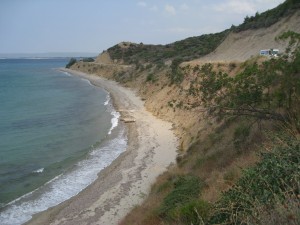 Helpful, Illuminating, and Inspiring, October 12, 2008
Helpful, Illuminating, and Inspiring, October 12, 2008
Jerry Boykin
I ordered this biography on a whim, as one of a dozen books on irregular warfare that I am using to review the thoughts of others before I publish my own book. When the three boxes from Amazon arrived, this book was buried under others, but was immediately the most attractive for the week-end.
Several important insights are available from this book:
1) Charlie Beckwith, whose book Delta Force: The Army's Elite Counterterrorist Unit I really enjoyed, especially the part where he refused to leave a British field hospital for an American one, learned from the SAS the most important lesson it had to teach, and brought it to DELTA: to be *truly* unconventional, to be *truly* irregular, you must be UNMILITARY. From this page (69) I simply relaxed and enjoyed a great account. I got what I was looking for, sooner than expected.
2) The 12-hour long march from point to point is a time-tested method of screening for individuals who have inherent resolve that cannot be trained for. I quote from page 78: “The Army can train a man to spy, shoot, blow things up, and kill with his bare hands. But it cannot instill in a man the series of two-sided personality coins that cash out as a successful operative: patience and aggression, precision and audacity, the ability to lead or fall in line. Above all, the Army cannot instill resolve beyond physical and mental limits.”
3) In the above context, faith is helpful, and faith cannot be taken for granted. Early on I enjoyed the author's explanation of how he reconciled faith with a profession that wages death (for life), finding that every war is a spiritual battle. The author explicitly identifies America as God's land of faith and tolerance, and I agree with him.
4) On page 130, he concludes that some men are evil and simply need to be killed. I agree with that completely. In the 1990's when I first started advocating the need to shift away from the Soviet Union and toward Third World terrorists and criminals, I used the phrase, “one man, one bullet.” We still cannot do that today, while the Navy and the Air Force continue to buy fewer really big things for more and more money.
I enjoyed every minute with this book. This is not a “shoot 'em book.” This is, as the subtitle communicates, the story of an extraordinary individual, a man born and trained to be the best possible fighter, who found faith and kept faith with God and America. He is “the way it ought to be.”
Here are some side notes.
Rumsfeld created the Undersecretary of Defense for Intelligence because he was furious that his Special Forces had to be “led” into Afghanistan by the CIA (see my review of Jawbreaker: The Attack on bin Laden and al-Qaeda: A Personal Account by the CIA's Key Field Commander.
George Bush Junior betrayed all of us in crucifying and disavowing General Boykin in the face of media lies and exaggerations for which the author was fully exonerated by two Inspector General endeavors.
Media–the out of control largely ignorant media–is the best weapon that terrorists and others who hate America can use. I agree with that, and I am especially concerned at the ignorance of both our current presidential candidates, neither one of whom can talk substance in the context of a balanced budget–and they get away with it because the media has no idea what the substance of governance is (see the free online book, also on Amazon, Election 2008: Lipstick on the Pig (Substance of Governance; Legitimate Grievances; Candidates on the Issues; Balanced Budget 101; Call to Arms: Fund We Not Them; Annotated Bibliography).
9/11 struck the author as the opening salvo in a long battle for our own soul. I agree with the soul part, but the battle started when we decided to run the world for 50 years, very badly, while ignoring the spread of violent Islam funded by Saudi Arabia. See these four books:
Sleeping with the Devil: How Washington Sold Our Soul for Saudi Crude
The Looming Tower: Al Qaeda and the Road to 9/11 (Vintage)
The Fifty-Year Wound: How America's Cold War Victory Has Shaped Our World
Wilson's Ghost: Reducing the Risk of Conflict, Killing, and Catastrophe in the 21st Century
Other tid-bits:
+ 1 of three officers to make cut in creating DELTA. Peter Schoomaker was another.
+ DELTA pool was 118 of whom 25 finished the Long Walk, of whom 19 were selected (in the first class)
+ Boykin's dad was one of five brothers who served in “The Good War,” three in the Army, two in the Navy.
+ He was 6 feet tall and weighed 180 lbs in the eighth grade.
+ Played guitar and wound up playing at World's Fair in 1965 (the thought, “well-rounded” came into my head–not a thug stereotype)
+ Virginia Tech Corps of Cadets
+ Drawn to brotherhood of infantry, inspired by Viet-Nam stories.
+ One of his coaches taught him that faith and reality could go together
+ Once married, his first child drove him to the Dean's List
+ “I really wanted to learn everything the Army had to teach.”
+ Found faith for real in the Army, it filled a void.
+ He LIKED Ham and Lima Beans in C-Rats. That alone makes him strange in an amusing sort of way. I always thought of that C-Ration as one step down from bread and water.
+ He had his failures, in both school and the Army, but they drove him to excel and honors came his way when he bore down.
+ Aide de Camp tour in Korea got him to Viet-Nam for three months, and gave him a strategic understanding of the Army
+ Lost the general's dog, ended up running him down. Very funny.
+ Was one of the originals as paratroopers migrated into air assault.
+ Almost shut out of DELTA by the shrink for “excessive faith in God,” but he connected with Beckwith in the final interview and got in, the clear message being that the faith was not misplaced.
+ Excellent discussion of the time value of instinctive shooting (with the necessary training) over aimed fire–life of a hostage, the first takes one second, the second takes two seconds, time for the hostage to be killed.
+ Beckwith understood the killing nature of bureaucracy
+ I have a note, this book is the anti-thesis to Colin's Powell's biography, My American Journey and a shorter different book-end to Hackworth's About Face: Odyssey of an American Warrior
The author takes us through a number of operations in a manner that does not compromise any tradecraft and is not tedious. I appreciated very much the light once over on Tehran (the students thought they would have to get out in three days, they under-estimated the timidity of the US under President Carter), Sudan, Graneda which was not a surprise and for which CIA had no intelligence of substance for the fighters, Panama, Somalia, and then Bosnia.
Sixteen pages of photos are in the middle of the book, all appropriate and helpful. There is no index.
I thought to end this review with several of the phrases from the Bible that the author quoted in the book. I bought Leadership Lessons of Jesus: A Timeless Model for Today's Leaders because it was on sale in the uniform store at MacDill, and now that I have read this book, believe that our Irregulars of the future will be well-served by being required to understand faith, and to memorize portions of the Bible, the Koran, and other Holy Scriptures (just think of the impact as shown in Lawrence of Arabia, when his completing a reading instantly won over King Faisal and sidelined the conventional colonel).
“I am the light of the world. Whoever follows me will never walk in darkness, but will have the light of life.” John 9.4-5
“He gives power to the faint, and to him who has no might he increases strength. Even youths shall faint and be weary, and young men shall fall exhausted; but they who wait for the LORD shall renew their strength; they shall mount up with wings like eagles; they shall run and not be weary; they shall walk and not faint.” Isaiah 40
“For they that wait upon the Lord shall renew their strength. They shall mount up on wings of eagles, they shall run and not be weary and they shall walk and not faint.” Isaiah 40.31, faxed from around the world as he struggled to survive a 50 caliber bullet shattering a radio into his body.
Amazon won't let me have more than ten links, but this one, by Navy Capt Doug Johnston, is worth a close look: Faith-Based Diplomacy. There is an intersection of UNMILITARY, faith, and Irregular War: Waging Peace that no one in power seems to understand.











